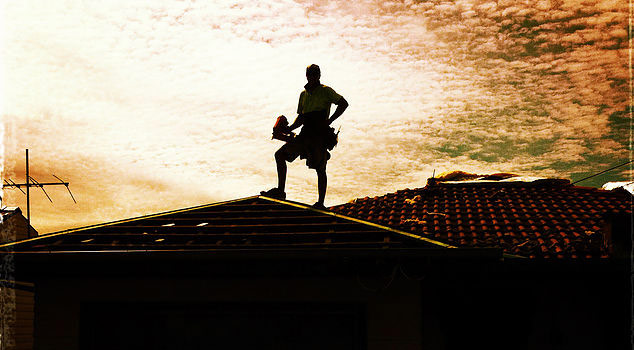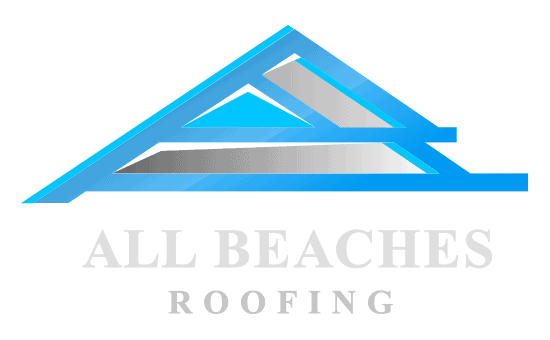All Beaches Roofing (Northern Beaches) Frequently Asked Questions

Head Office is located at:
Mona Vale NSW 2103
What hours are we available?
Office Hours: Monday to Friday 7:00am – 5:00 pm
Saturday – Sunday if emergency 7:00 am – 5:00 pm
After hours call out available for emergency but are charged at a higher rate.
What areas do we service?
All Beaches Roofing provides roofing, roof repairs, guttering and gutter cleaning services to Sydney, Northern Beaches and Sydney’s metropolitan areas.
How big of a job will we cater for?
There’s no job too big or too small for All Beaches Roofing, be it roofing or guttering residential, strata, commercial or insurance work.
Do we guarantee our workmanship? Yes! We guarantee our quality work.
What types of payment do we accept?
Payments can be made by:
DIRECT EFT PAYMENTS TO OUR ACCOUNT
CHEQUES
CREDIT CARD: MASTER CARD or VISA
Are you insured?
All Beaches Roofing are fully insured.
What types of product materials do we use?
All Beaches Roofing use the highest quality roofing material from leading brands such as BlueScope Steel Colorbond, Ace Gutters, Flexi point, Air cel, Monier and Boral Tiles.
What do I do If my roof has a leak?
Call a roofing expert from All Beaches Roofing. Cover all valuables. Stay away from the area if there is a lot of water coming through.
What style roofing should I choose for my property?
There’s a wide range of materials and colours available to take into consideration. At All Beaches Roofing we are here to help you. Some of them may be slate, metal, concrete, clay tiles, wood shingles or asphalt. This is where we come in and offer you expert advice. Some more options you’ll want to consider are not only the cost but the color, texture and durability of your roofing material as well as what is in the area at present for future sales of your property.
How is Colorbond steel made?
“Colorbond starts with a ‘Zincalume’ steel base. Zincalume steel has an aluminium/zinc/magnesium; alloy coating that delivers outstanding anti-corrosion performance.
Then they apply a conversion layer to the surface to steel to improve adhesion.
Then a polyester primer is baked onto the surface.
Finally a top coat is applied consisting of a specially developed, exterior grade paint that is baked on to ensure maximum resistance to chipping, peeling and cracking.”
How are concrete tiles made?
Concrete tiles are made from sand, water, cement and pigments, and are not fried like clay tiles, but cured at temperatures of approximately 60 degrees Celsius. The curing process makes them sturdy enough to be transported and laid within a few days of manufacture, and they get stronger over time.
Terracotta Roof tiles facts:
Tiles made from terracotta are a very commonly used roofing material in Australia and around the world. Terracotta tiles have been around for a very long time and either appear in their distinctive, natural red-orange colour, or glazed to provide different finishes and colours.
Terracotta tiles are installed by placing overlapping and interlocking rows of tile on the roof and are available in a range of styles.
Terracotta is very hardy and has been known to last hundreds of years if it’s treated right. Terracotta is also waterproof and fire resistant, offering good protection from the elements.
Slate Roof Facts:
Slate is a type of metamorphic rock, meaning a form of existing rock which has undergone transformation due to intense heat and pressure. It is a fine grained, frequently grey coloured rock however, slate occurs in a variety of colours even from a single locality. For example, slate from North Wales can be found in many shades of grey from pale to dark and it may also be purple, green or cyan.
Slate is laid on the battens in a ‘brick bond’ pattern, i.e. with the joints between them aligned with the center of the slates above and below, and with about 3mm between the sides. This layout gives a double lap covering which means that the top part of each slate is covered by two slates, the center of the slate of the next row and the lower part of the slate above that. The overlap will depend upon the slope of the roof – the steeper the slope, the smaller the overlap required.
How is asphalt shingles made?
In the United States, asphalt shingles are categorized as either organic-based or fiberglass-based. Organic-based asphalt shingles are manufactured with a base made of various cellulose fibers such as recycled waste paper and wood fibers.
How do I determine if a roof should be replaced?
In time, every roof needs to be replaced, usually due to the long term effects of weathering. If a residential roof is more than 20 years old, it is a prime candidate for re-roofing. Ways to insure your roof needs replacing include:
Look for things on the inside such as places where the roof deck is sagging, signs of water damage or leaking, dark spots and trails and outside light showing through the roof.
On the exterior on the rood, pay attention to such things as damaged flashing, missing shingles, curling, blistering, buckling, and rotting and algae growth.
Visually inspect your roof for cracked torn, bald or missing shingles.
Metal roofing facts:
Tile roofing material begins to deteriorate as soon as it’s exposed to elements such as the UV rays of the sun, temperate changes, severe storms and high winds. A colourbond roof will never deteriorate and can withstand most everything Mother Nature throws its way.
Colorbond roofing is made for Australian conditions. There are 22 different colours you can choose from. Whether you have a traditional or contemporary home there will be a colour of style of colorbond roofing that will suit your home. It has a durable baked on paint finish that resists corrosion, chipping, peeling and cracking, which means you have long lasting and durable roofing. Its one of the lightest roofing materials available. They require less ongoing maintenance than other types of roofing.
Should I get a roof restoration?
Some contractors only do restorations and will tell you can get 6-8 years more out of your roof when actually it is best to replace it now. One important thing to remember is that the longer you leave your roof, the more likely is it that water will get into places that it shouldn’t.
If I have a asbestos roof, should I get it replaced?
If your fibro/asbestos roof is in good repair, there is no need to have it replaced as it does not pose a safety risk. However, if it’s leaking then it means there is damage and it requires replacing.
Is insulating my new roof a good idea?
Yes, at All Beaches Roofing we always use anti con insulation as a standard as it is required in the roofing code. We sometimes offer the highest quality insulation as an extra.
Should I get gutter guard?
Some types are noticeably inferior, such as the fiberglass (fly wire mesh) and gutter guards that are installed inside the gutter itself.
If your home is located in a leafy area – then most definitely. Installing gutter guard is smart preventative maintenance, stopping leaves clogging up your gutters and down pipes, thereby reducing the risk of expensive flood damage in heavy storms. Leaf matter sitting within the gutter can also cause damage it increases the chances of the gutter rusting out. It is important to note that gutter guard is not completely maintenance free.
There will be times when some lead matter can build up on top of the gutter guard mesh particularly in wet weather. Generally the majority will blow off but on occasion it will require removal using a broom a blower vacuum. However, your gutters will remain clean and debris free.
Areas we service in Sydney, Northern Beaches and Northern Suburbs, All Sydney Metropolitan Areas.
East Gordon, East Killara, East Lindfield, East Roseville, East Wahroonga, Gordon, Killara, Lindfield, North Turramurra, North St Ives, North Wahroonga, Pymble, Roseville, Roseville Chase, South Turramurra, St Ives, St Ives Chase, Turramurra, Wahroonga, Warrawee, West Killara, West Lindfield, West Pymble, Greenwich, Lane Cove, Lane Cove North, Lane Cove West, Linley Point, Longueville, Northwood, Riverview, St Leonards, Cammeray, Cremorne, Cremorne Point, Crows Nest, Kirribilli, Kurraba Point, Lavender Bay, McMahons Point, Milsons Point, Neutral Bay, North Sydney, St Leonards, Waverton, Wollstonecraft, Berrys Bay, Neutral Bay Junction, North Sydney , Athol Bay, Balmoral, Balmoral Beach, Beauty Point, Bradleys Head, Chinamans Beach, Chowder Bay, Chowder Head, Clifton Gardens, Cobblers Beach, Edwards Beach, Georges Head, Georges Heights, Hunters Bay, Little Sirius Cove, Long Bay, Middle Head, Mosman Bay, Obelisk Bay, Parriwi Head, Pearl Bay, Quakers Hat Bay, Rocky Point, Shell Cove, Spit Junction, Taylors Bay, Taronga Zoo, The Spit, Wyargine Point, Balgowlah, Balgowlah Heights, Clontarf, Fairlight, Manly, Seaforth, Allambie Heights, Beacon Hill, Belrose, Brookvale, Collaroy, Collaroy Plateau, Cottage Point, Cromer, Curl Curl, Davidson, Dee Why, Duffys Forest, Forestville, Frenchs Forest, Freshwater, Ingleside, Killarney Heights, Manly Vale, Narrabeen, Narraweena, North Balgowlah, North Curl Curl, North Manly, Oxford Falls, Queenscliff, Terrey Hills, Wheeler Heights, Akuna Bay, Allambie, Bantry Bay, Bungaroo, Collaroy Beach, Cromer Heights, Curl Curl Beach, Dee Why Beach, Fishermans Beach (Collaroy), Freshwater Beach, Gooseberry Flat, Long Reef Beach (Collaroy), Narrabeen Beach, Narrabeen Peninsula, North Curl Curl Beach, North Narrabeen Beach, Peach Trees, Sorlie, Wingala, Akuna Bay, Avalon Beach, Avalon North, Barrenjoey, Bayview, Bilgola Beach, Bilgola Plateau, Bungan Beach, Bungan Head, Careel Bay, Careel Head, Church Point, Clareville, Clareville Beach, Coasters Retreat, Currawong Beach, Elanora Heights, Elvina Bay, Foleys Hill, Great Mackerel Beach, Ingleside, Ingleside Heights, Loquat Valley, Lovett Bay, McCarrs Creek, Mona Vale, Morning Bay, Narrabeen, Newport, North Narrabeen, Palm Beach, Paradise Beach, Salt Pan Cove, Sand Point, Scotland Island, South Warriewood.
See all our roofing repair and gutter maintenance service areas in Northern Beaches.
